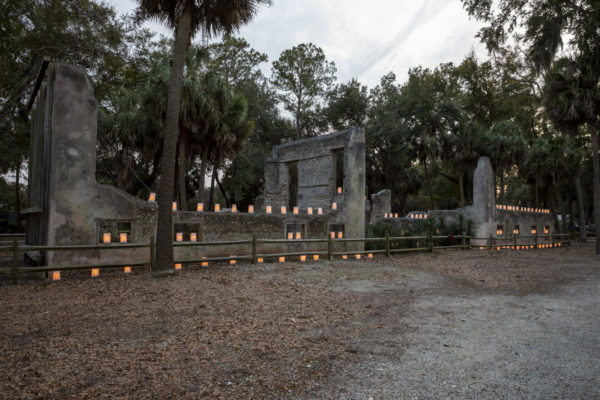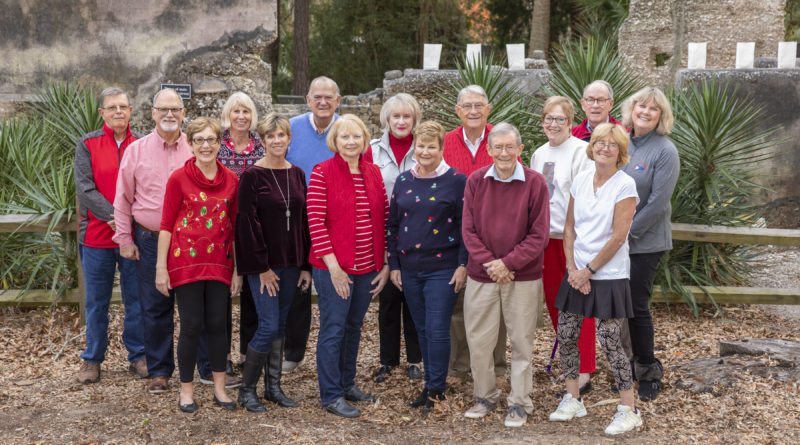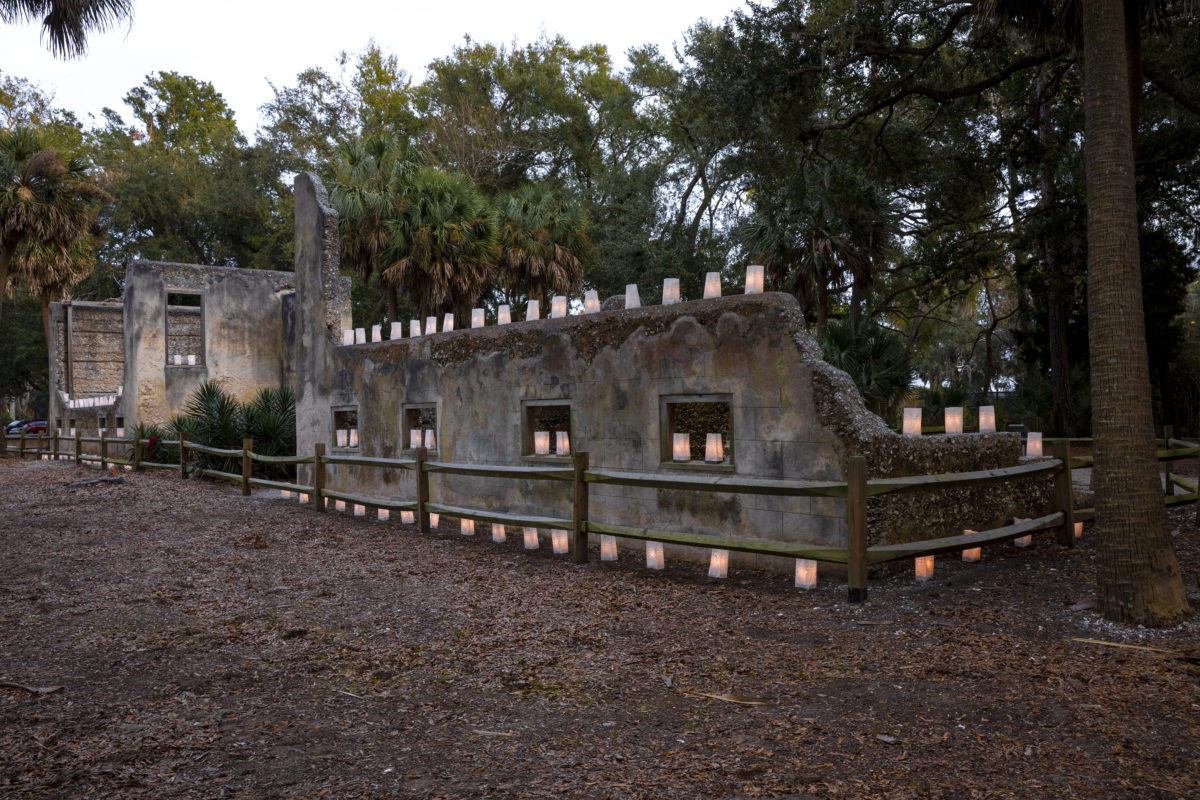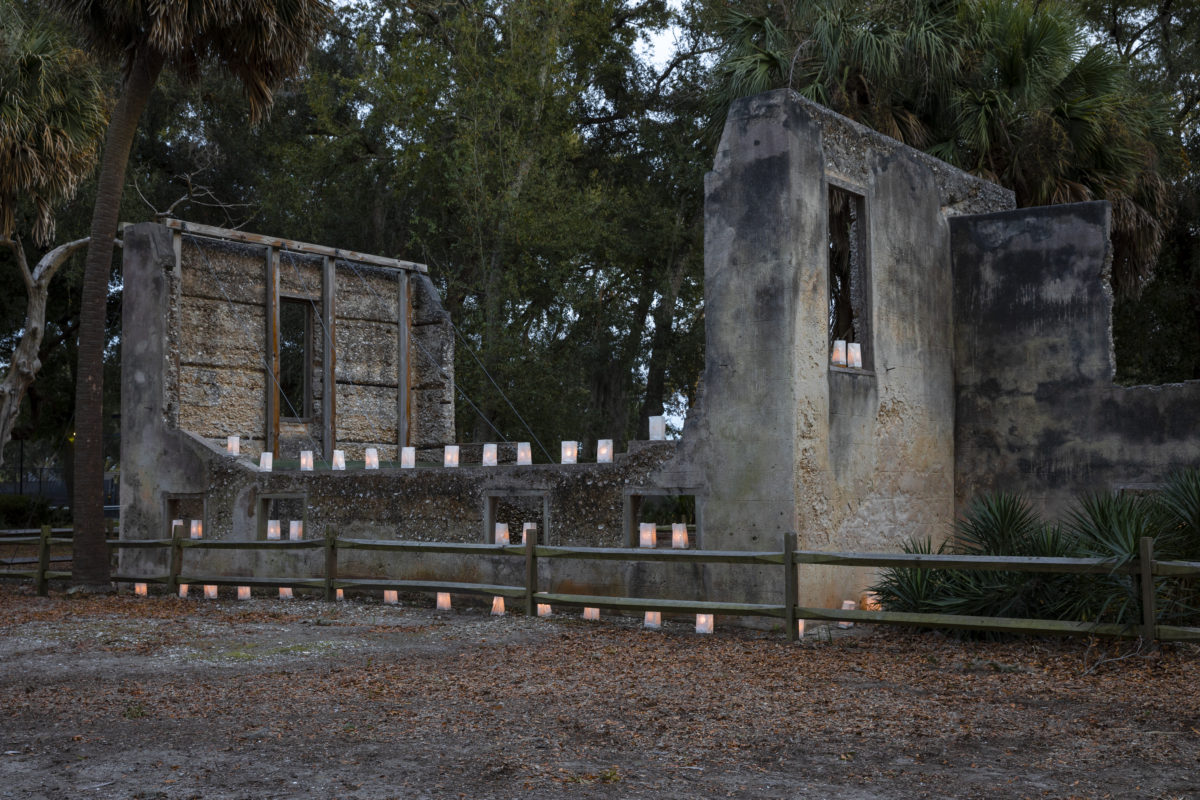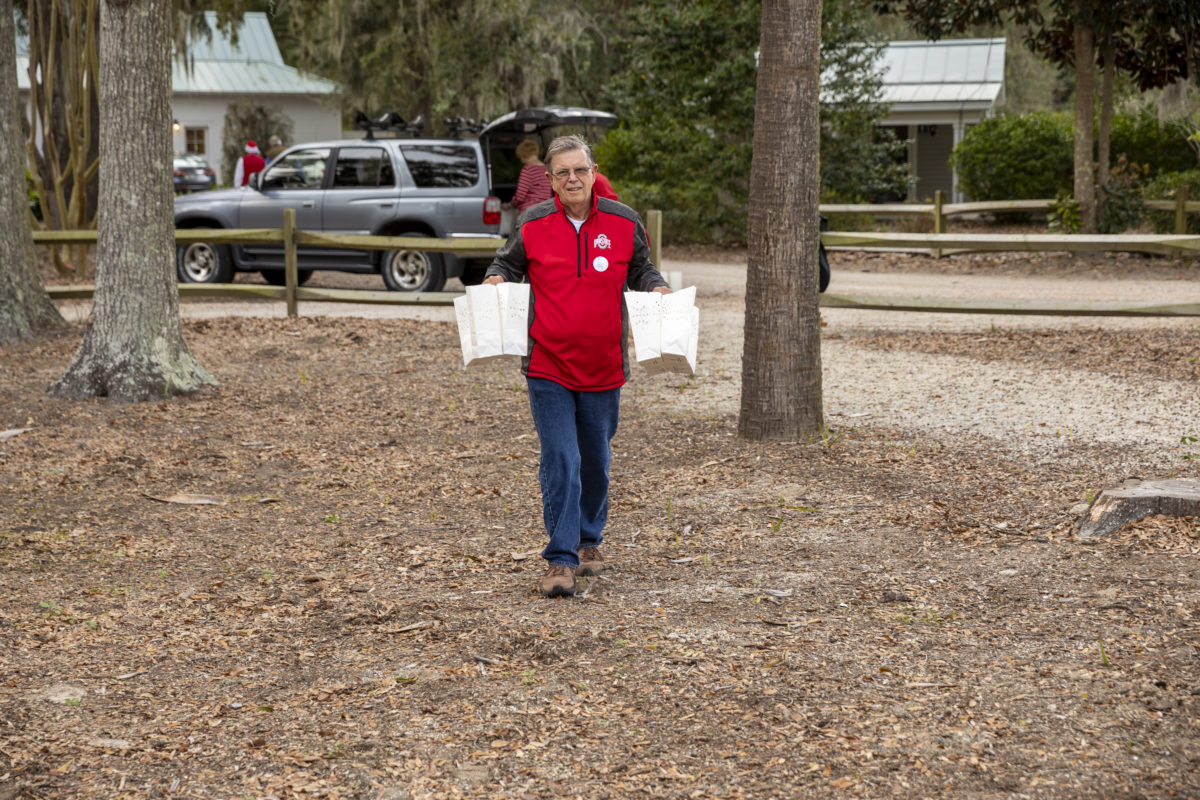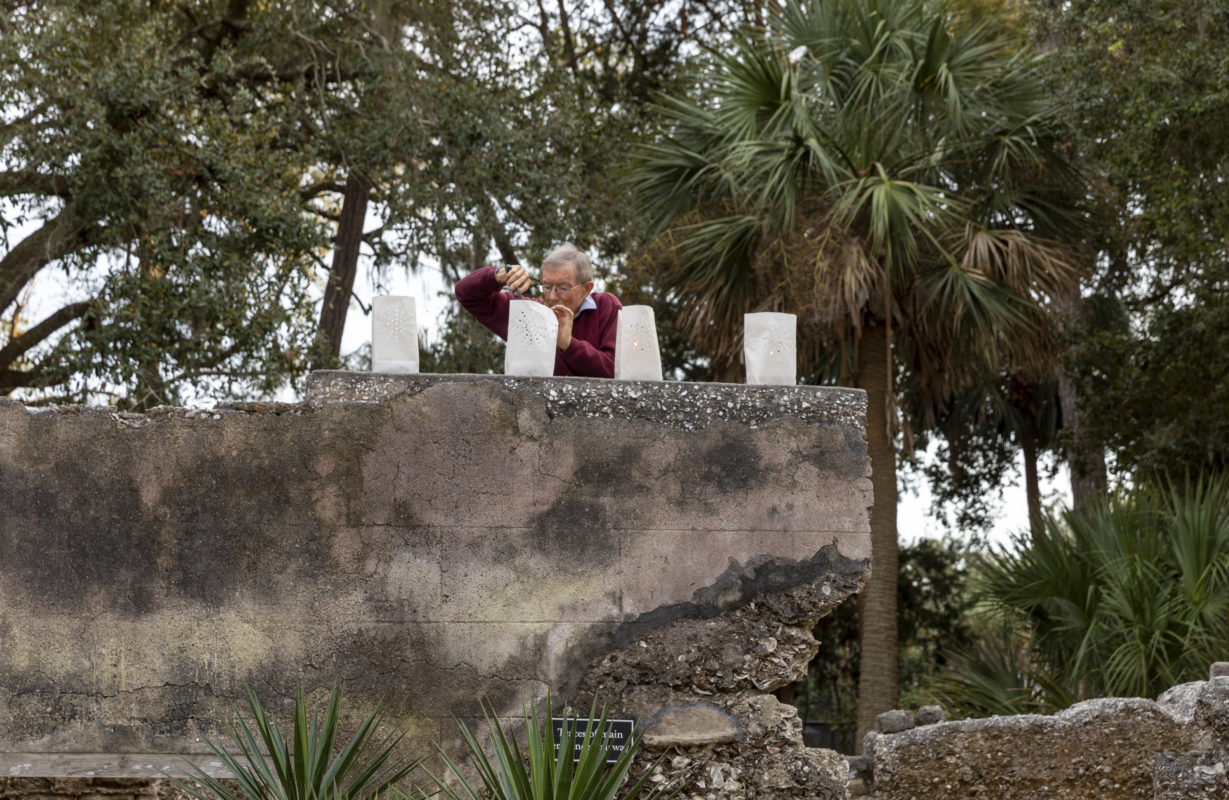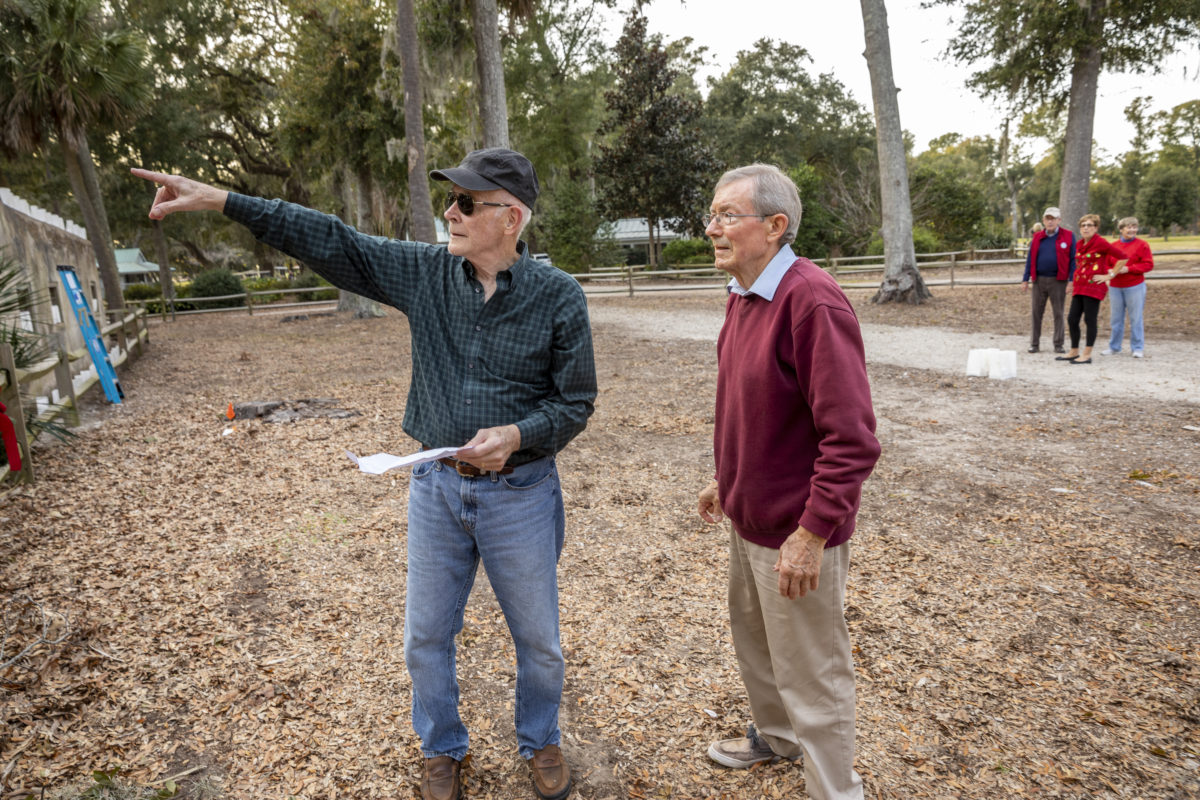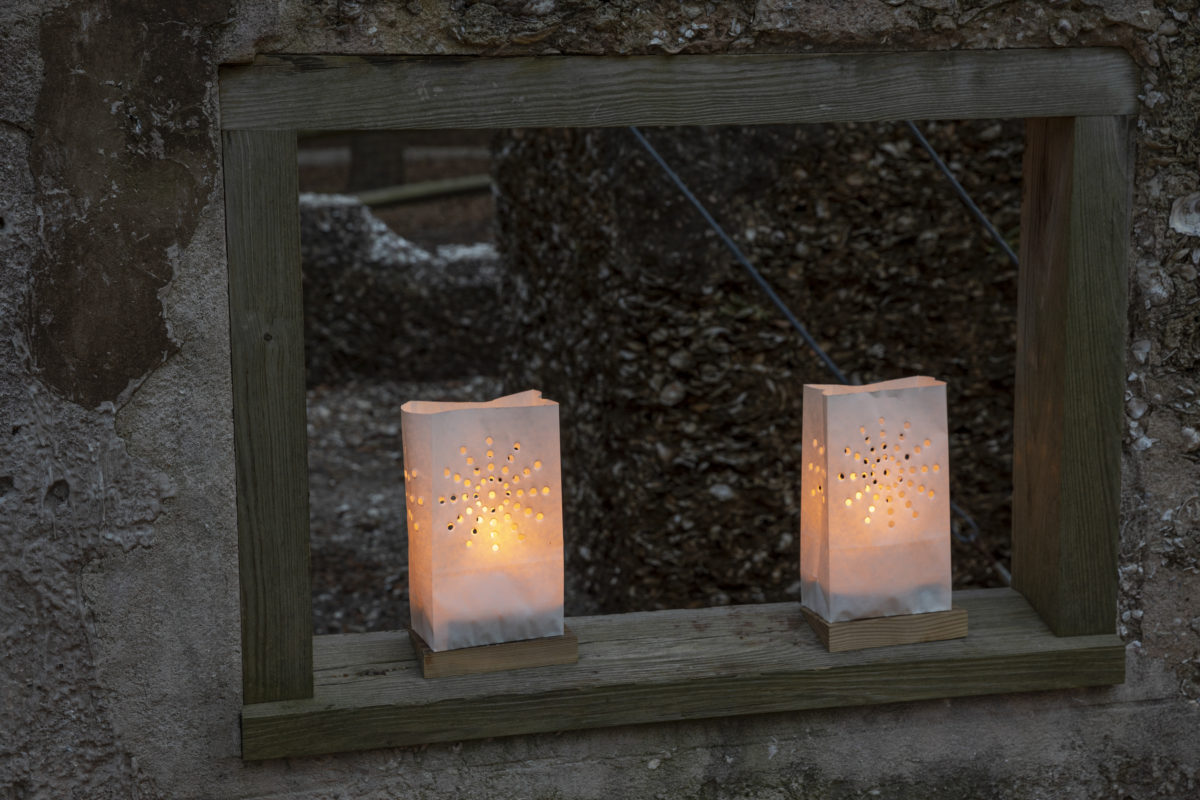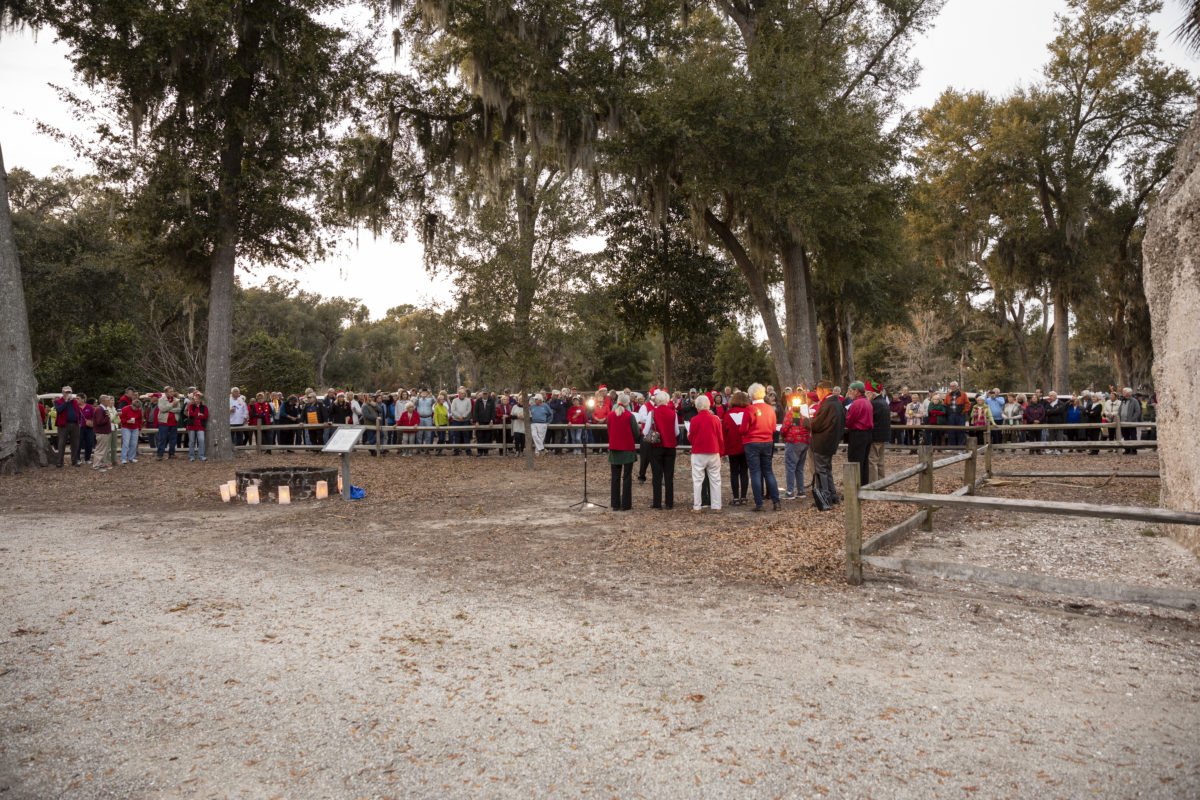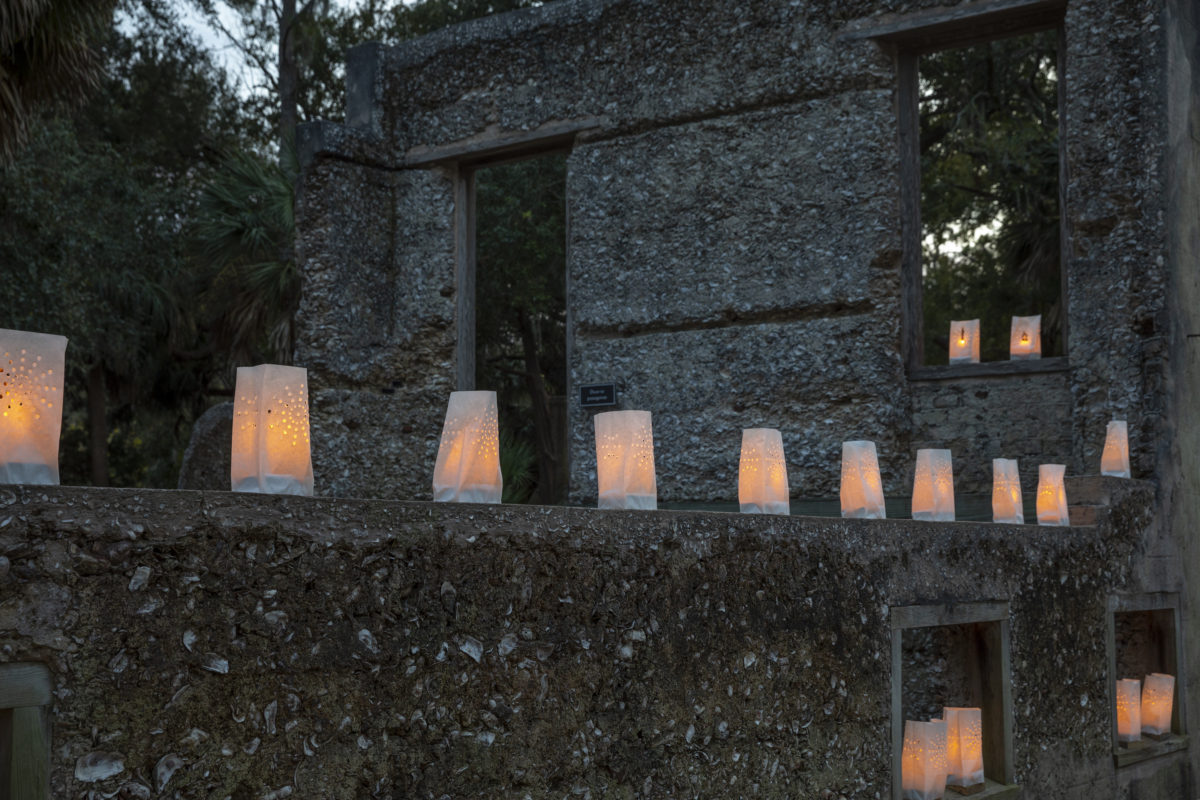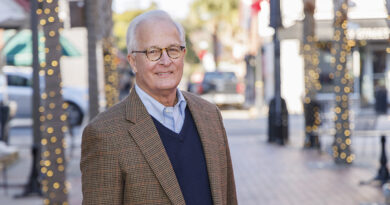A HISTORY OF DATAW
Still Standing
story by ROBIN TODD photos by PAUL NURNBERG
Buried treasures being revealed by mother nature over time continue to make their way to the surface on Dataw Island. The Sams Family Plantation stands still amid the island and its centuries-old live oaks and the love of the residents and visitors to Dataw. Now listed on the register of National Historic Places, The Sams Plantation Ruins are still standing proud. Holding these walls up is a group of residents, community members and descendants of the Sams Family who have formed to preserve the Ruins and the history surrounding the legacy and stories of the families who once called Dataw home. The Dataw Historic Foundation established in 1997 is a 501 (c)(3) non-profit organization and is one of the strongest Foundations on the island of about 300 members. They meet to discuss and implement preservation projects and are available to share the history and culture with anyone who shares a passion for learning. The Foundation, along with the community and descendants of the Sams Family, was able to construct a brand new History and Learning Center in 2016. It displays and tells the stories of this Plantation and the lives of those who walked upon it. The cost of the building was funded one hundred percent by private donors, who share a passion for preserving the history of the island.
Inside this beautiful new building, one will find an exact replica of the original Sams Family home, built to scale. This one-of-a-kind replica was created by a resident of the community, using a painting from a Sams family grandaughter and metrics from the Plantation ruins, which lies just a short walking distance from the Learning Center. Duplication of this original painting also hangs on display. You can view a copy of the original ambrotype and daguerreotype of Dr. Robert Sams and his wife Sarah hanging on the walls. Along with these items you can find artifacts, unpublished articles and historical documents (both print and in digital format) to further explore the island’s history. The Foundation is always on the searching for anything that may contribute value to the full history of the Sams family, the slaves, the Plantation, or the history of the land dating back to prehistoric times. Travelers from 49 states have visited the new center since it opened its doors in 2016 and continues to host group tours by request.
There has been found evidence of life upon these shores for the past 10,000 years. The land here was purchased by William Sams out of necessity to leave his home at Wadmalaw at the end of the American Revolution in 1783, when he began to grow Sea Island Cotton, bringing wealth to the Sams family. The family was forced out during the Civil War and the slaves stayed as free people. Regardless of their historical circumstances, they have left quite an imprint on the shifting sands of Dataw. ALCOA purchased the island in 1983 and formed the residential community you will find today surrounding the ruins.
You can walk along a trail of bricks that displays the names of the numerous private donors to the preservation, which leads you inside the Sams Family Plantation “walls.” You will find the ruins of the original home, kitchen, and dairy house. The dairy house was built to hold ice brought in on a hull of ships from Boston, which would keep their goods cool all season. The pitched Tabby roof is the most unique feature of this structure, being one of the only one’s left in the world. The Foundation is working with experts to ensure its preservation, as this is one of the things that sets the Plantation apart from other local historic sites. A full description of what the home looked like was written by James Julius and can be found on the Foundation’s website. He goes into detail about daily life on the Plantation, information on the interior of the home, interaction with the slaves, and his adventures in hunting on the island.
If you follow the path behind the Learning Center, you will find the Sams family Cemetery as well as a list of who is buried there and a brief timeline of their lives. A chapel once stood beside this plot and was depicted in a sketch that you can find here as well. Not all the graves are marked currently; however, they have had surveying completed to show more buried members of the Sams Family. Separate from this site is the slave’s cemetery, as they did not have slaves and family members buried in the same location. The slave graveyard may be visited as well, but there are no stones to mark the sites. Looking out from the family cemetery, there is a multitude of crops the land has seen come and go to include Sea Island Cotton, indigo, and orange trees.
Marilyn Peck, current president of the Foundation, shares the numerous preservation projects and their ongoing efforts. They are now working to reveal the history and dimensions of a second home along the Morgan River, which was owned by Lewis Reeves Sams of the Sams family. Most of the house is underwater and will be documented using drone technology and the help of low tide.
The official mission statement of the Foundation is, “To foster the rich Sea Island plantation history of Dataw Island and to be the custodian of Dataw’s entire history from prehistoric to the present.” You may visit their newly designed site, www.DatawHistory.com, for more detailed information about upcoming projects, events, donations, and memberships. Also on their site are links to historical data, archives and the history of the land and the people who formed the island. Public tours may be assessed by booking ahead of time through the Foundation or through Bill Reynolds who privately owns Beaufort Tours.
